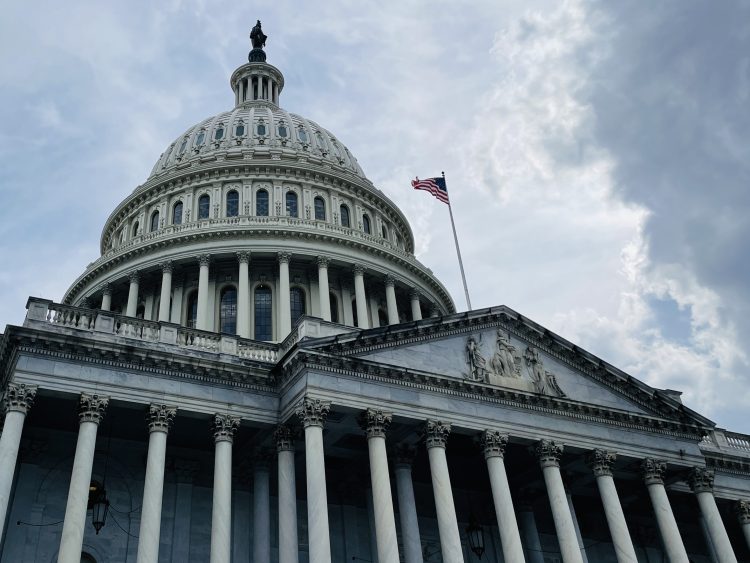This week on Facing the Future, we hear from Gordon Gray, Director of Fiscal Policy at the American Action Forum, who has come out with a new paper proposing a pragmatic way to reduce the significant legal immigration backlog that could result in more than $110 billion in economic output per year. Concord Coalition Policy Director Tori Gorman joined me for this discussion. Gray is a veteran of both Capitol Hill and several political campaigns, having served on the staff of Senator Rob Portman (R-OH), and worked as a domestic policy advisor on the 2008 presidential campaign of the late Senator John McCain (R-AZ).
Gray argues that when you look at declining birth statistics and the current labor shortage, combined with the high productivity rates of new Americans who emigrate to the United States, you can clearly see how bringing in more legal, skilled professional immigrants can quickly benefit economic output. The problem is that a significant backlog has been created at the agency that processes the skilled work visa applications, US Customs and Immigration Services (USCIS). Gray says the current backlog is primarily due to the pandemic, because much of the agency’s work is in-person and public facing, doing interviews with applicants and other critical tasks. And that work was seriously disrupted during the last two years.
“In any given year, there are on the order of roughly 7 million applications filed and the agency approves about 90% of these applications,” said Gray. “In general, when things are going great, their caseload is tremendous. This is an agency that is performing well, especially given the constraints that are placed upon them. Their mission is labor intensive, they need a lot of people who need to do a lot of things for them to succeed, and they were particularly susceptible to disruption from the pandemic. Of the roughly 8.5 million applications in their current pending caseload, the backlog is over 5.2 million and that part has grown substantially over the last two years.”
Gray says the best way to reduce that backlog is to increase staffing resources beef up at USCIS, creating a surge of personnel that can handle the backlog of pending cases and process more visa applications. But Gray says there is a complication to that: The USCIS is not funded through Congressional appropriations.
“As a budget expert, I was shocked to see that this agency receives 97% of its funding through the fees paid by applicants. From a pure taxpayer’s perspective that sounds great, and it is convenient from the perspective of Congressional appropriators, because it’s something they don’t have to fund,” said Gray. “The problem is that fundamentally this is an agency that lives hand-to-mouth.The agency estimates what their workload will be and what their staffing needs will be, and parameters for processing times for the coming term. They’re supposed to review their fee structure every two years, but they have to follow the Administrative Procedures Act with a proposed rule and public comment, and that takes up to years, and then they publish a final rule. Right now, the agency is operating under the fee structure that was published in the Federal Register in 2016. They fell behind and the way they’re structured is they can never really catch up. Essentially, their fees are designed to meet incoming caseload, and so they’re just not structured to ever dig out.”
Gray says the last time USCIS tried to adjust its fee structure was in 2020, but they were prevented from doing so by a federal court ruling. So what he proposes is a one-time Congressional appropriation of approximately $3-4 billion that could add enough staff to provide a surge of personnel to eliminate the backlog and process all the pending applications for work visas. Doing so, according to Gray’s research, would soon contribute more than $110 billion in annual economic output and have a positive impact on the federal budget.
“You could eliminate this backlog in about 4-5 years. It’s essentially a one-time transaction for allowing a worker in and a lifetime of tax payments and economic activity,” said Gray. “You could let in, advance, or accelerate the entrance of on the order of 930,000 productive workers into the economy who otherwise are held up. These are economically consequential visa applications and would give rise to employment. That proposition seems like a good one from the taxpayers’ perspective. Marginal first generation immigrants pay more taxes than they collect in benefits. Our conservative estimate is that this would be a net positive of $30 billion for the federal budget over the 10 year budget window.”
So from a policy and a procedure point of view, taking this step seems like a very straightforward way to get at some low hanging fruit and add short and long-term economic output. But as with all seemingly easy policy solutions, as Tori Gorman points out, politics gets in the way.
“It is so hard for lawmakers right now to talk about immigration,” said Gorman. “Even if we need to just get a foot in the door, let’s just focus on H1-B visas; these are your highly skilled workers, your engineers, physicists, mathematicians, doctors. Let’s just focus on getting them here legally so they can live here, work here, pay taxes here, pay Social Security and income taxes here, and fill those jobs. But you just say the word immigration – even though we are talking about legal immigration – and it gets wrapped up in all the negative connotations with what’s going on at the border. And you literally get lawmakers who stick their fingers in their ears and go ‘na-na-na-na-na-na.’ It’s penny-wise and pound foolish, and cutting off your nose to spite your face.”
Hear more on Facing the Future. I host the program each week on WKXL in Concord N.H., and it is also available via podcast. Join my guests and me as we discuss issues relating to national fiscal policy with budget experts, industry leaders, and elected officials. Past broadcasts are available here. You can subscribe to the podcast on Spotify, Pandora, iTunes, Google Podcasts, Stitcher, or with an RSS feed. Follow Facing the Future on Facebook, and watch videos from past episodes on The Concord Coalition YouTube channel.
Continue Reading











